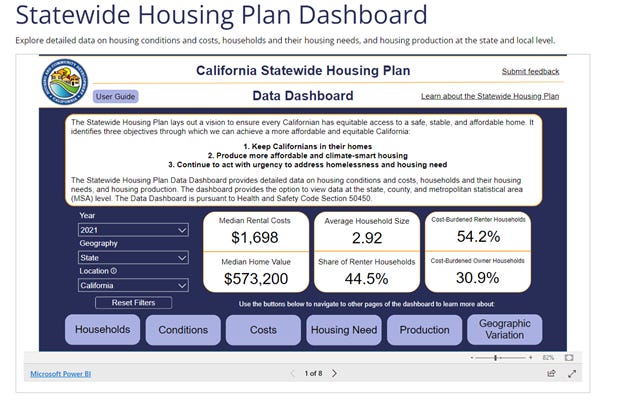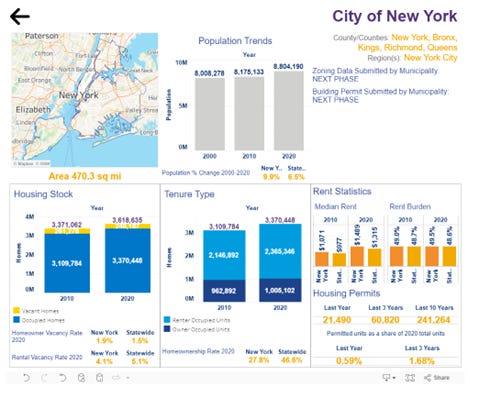Hochul’s Executive Order explained
Governor Hochul uses Executive Order to bypass legislature with new housing plans
New York Governor Hochul has recently announced two key initiatives she hopes to get passed – without the need for legislative approval. In this brief, I will provide an overview of one of the initiatives Hochul is proposing. I will explain the approvals required for this proposal to be enacted into law. Finally, I will try to make sense of what this means for you – as a property owner or investor in NYC multifamily.
Two key initiatives:
Pro Housing Community Program
421-a work around for Gowanus
Today we will only look at the Pro Housing Community Program.
Overview:
This initiative takes inspiration from Hochul’s Housing Compact, which failed to pass in the legislature, but dresses it slightly differently. Instead of penalizing jurisdictions for not reaching housing targets, this proposal would reward localities with certifications and ranks to denote their willingness to embrace housing development. The higher a town or city is ranked, the more easily it will be able to secure funding from such key state funding sources as: Downtown Revitalization Initiative, the NY Forward program, and The Regional Council Capital Fund. Approximately $650 million of additional funding would be made available for certified locales.
DHCR will distribute guidelines to localities across NY state that distill exactly what thresholds and criteria must be met to receive preferential treatment for project funding. So far, the governor’s office has simply shared that DHCR will be reviewing “local zoning codes, local housing assessment data, and information detailing local housing permit approvals over the past five years.” It was also shared that locales in downstate NY that demonstrate a >1% growth in their housing stock year over year will have greater chances of consideration. Certifications will need to be re-submitted once a year.
What approvals are needed for this to take place?
The governor signed an executive order making this initiative law. It has already assigned to DHCR the responsibility of doling out certifications and ratings. This is now the law.
Implications
What’s not mentioned in the executive order is that this will require lots and lots of data. Housing data will need to be organized by locales, and then sent to the state. The State of NY will then have to re-organize the data so that it can be contrasted to other municipalities’ housing metrics in one uniform manner. California has done this with some success and one can view their housing efforts online at the click of a button.
One could argue that this initiative does not solve the housing gap in NY, estimated to be at a deficit of ~800,000 apartments over the next 10 years. When boiled down, this policy simply rewards those YIMBY parts of NY state. Those areas not interested in boosting housing production don’t really get penalized, since the only penalty is to not be able to secure funds to boost housing more easily. This is a much, much softer punishment than was previously suggested with the failed Housing compact, wherein noncompliance by locales meant the state could override local zoning decisions for developer projects.
Though Governor Hochul isn’t forcing any county to grow its housing at the threat of losing control over local zoning decisions, this plan does lay the foundation for more targeted, carrot and stick approaches down the line. If this program gets buy in – and that’s a big if because there do not seem to be incentives to do this for NIMBY communities – then the state will have much more data than it does today, and this will make it easier to spot where the problems are. Picture it: five years down the road and data analysts can, at the click of a button, see the counties with the lowest permit approval rate in NY. Double click. Now they see the response times for permits. Double click. Now they see the types of permits submitted. The hypothetical result? It turns out that housing permits in counties x, y, and z take the longest amount of time to get approved and have the highest likelihood of failing. What’s more, the permits were all for affordable housing projects of 50+ units. Hochul won’t penalize districts that perform low on housing production today, but with greater state oversight and visibility into housing, it’s quite possible that she will tomorrow.
Housing dashboards
To house all the housing data 😉, Hochul and her team have created the beginnings of a dashboard. It is linked here, and looks like this when you click and ask for more details. As you can see, the link is sometime buggy. That is why NY State is calling this a beta. Below is what the dashboard looks like when it functions.
For comparison, this is what the California housing dashboard looks like! Very similar, but it also comes with specific categories of data on households, conditions, costs, housing need, production, and geographical variation. It will be very interesting to see how the NY dashboard grows and evolves with time, and how Hochul is able to get buy-in from NIMBY cities to submit their housing data.

Source: Homes and Community Renewal – Pro Housing Community Program



